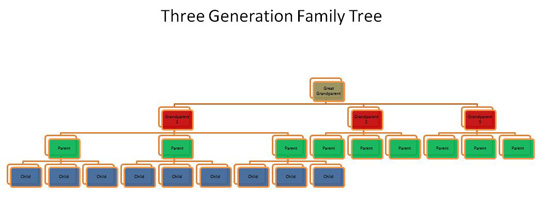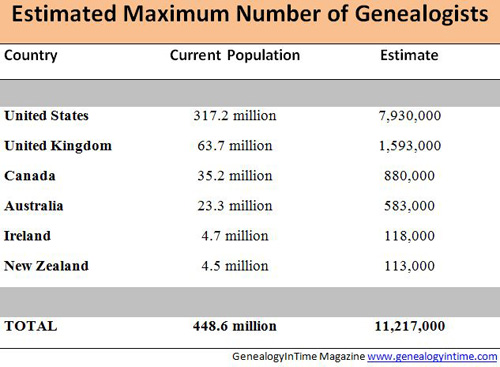How Many People May Have Conducted Ancestral Research?
Everyone may have ancestors, and most people may have some interest in genealogy, but not everyone needs to research their ancestors. This is an important distinction that is often lost in the discussion on the popularity of genealogy.
Usually, one member of an extended family does most of the ancestral research for the entire family. This imposes something of a conceptual limit to the number of people who actually need to research their ancestors.
Every family seems to have the proverbial great aunt who has done most of the genealogy for the extended family. Using this as the starting point suggests that (for most families) at any given time, there is perhaps one out of three generations currently conducting serious ancestral research.
Using a simple assumption that each generation produces 3 children, it is possible to estimate the percentage of the population that is likely to be conducting genealogical research. The diagram below shows three generations, with each generation producing 3 children.

In the diagram above, there is one great grandparent, three grandparents, 9 parents and 27 children. In total, there are 40 people in this family group. Based on our estimate, only one person in the family group is likely to be doing ancestral research.
This means only 1 out of 40 people would actually be conducting genealogy research. Extending this logic to the general population suggests that at most we would expect about 1/40th of the population to have done genealogy. This works out to 2.5% of the population. We would view this number as an upper limit to the size of the field of genealogy.
The table below shows the current population for the all major English-speaking countries. Also included is an estimate of the maximum number of people expected to do genealogy in each of the countries based on our 1/40 rule. It shows that in aggregate there are at most some 11.2 million people who have done genealogy in the English speaking world.


